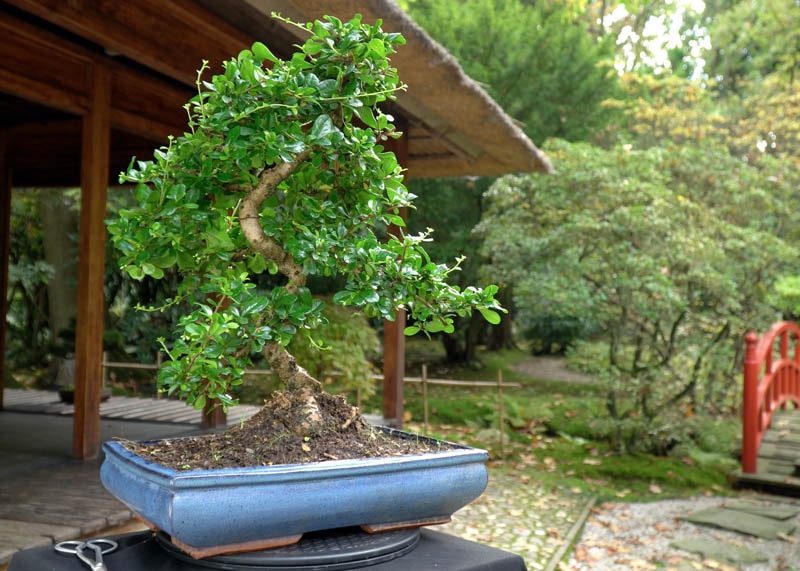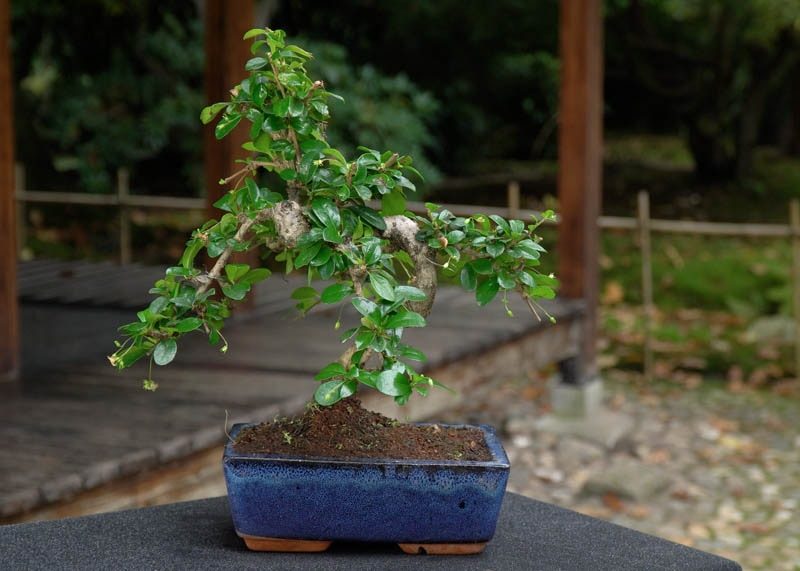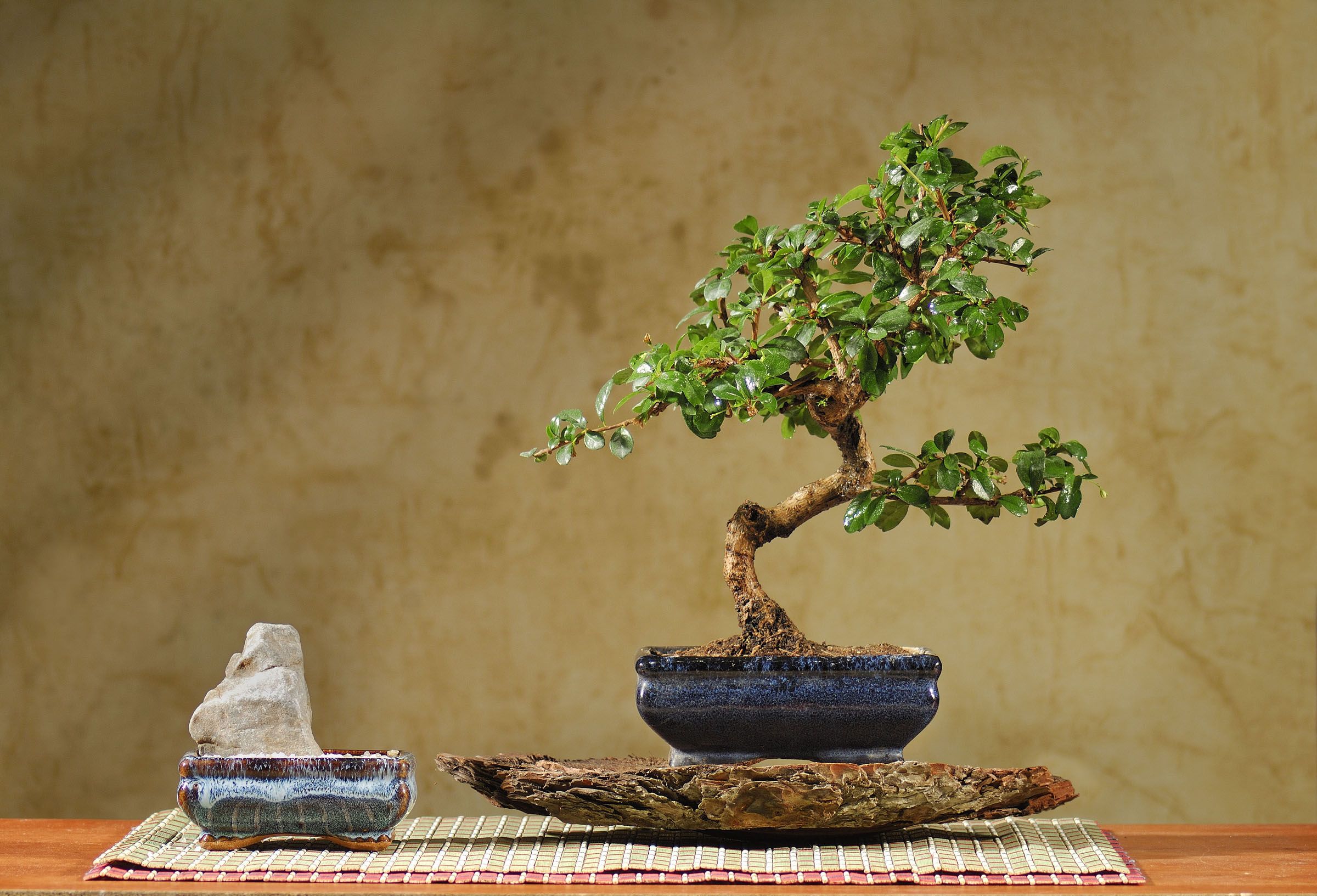- No products in the cart.
The Fukien Tea Bonsai, a tropical evergreen shrub native to Southern China, can be an ideal plant for bonsai enthusiasts residing in warm regions. With appropriate attention, this tropical bonsai tree blooms with small white flowers in the early winter and spring months, and at times, even throughout the year. However, the question is what aspects should be paid attention to in Fukien tea bonsai care. Let’s explore the necessary care instructions to find out.
Fukien Tea Bonsai Care: Introduction
The Fukien Tea bonsai, also known as Carmona bonsai, hails from the Fujian province of Southern China. It is distinguished by its small dark green leaves that are covered in fine hairs, as well as its light brown bark which tends to crack as the tree matures. One of the most intriguing attributes of this tree is its beautiful small flowers that transform into tiny dark berries, though this only applies to small-leaf variations of the Fukien Tea.

Placement
The Fukien Tea Bonsai, also known as Carmona bonsai, is typically kept indoors as a Bonsai but can be placed outdoors in warm climates. It thrives in bright, natural light, so it should be placed near a sunny window. The ideal temperature for this tree is around 70°F (20°C), so it’s important to keep it away from harsh cold temperatures.
During summertime, if the weather is warm enough, you can move your Fukien Tea bonsai outside. However, it is important to ensure that the nighttime temperatures are also warm. Winter can be more difficult for these bonsai trees due to shorter days and dry air caused by heating systems.
To combat these conditions, you can use a plant lamp to provide additional light and place a tray filled with wet gravel or foam clay under the pot to maintain humidity levels. In case you need to open windows during the winter, make sure that the Fukien Tea bonsai is protected from cold or frosty air.
To expose your bonsai to brighter direct sunlight outdoors, it is recommended to do so in the morning or late afternoon. During these times, the sun’s rays are not as harsh as they are during midday, providing a more favorable environment for your bonsai.

Watering
Fukien Tea Bonsai trees prefer soil that is moist but well-draining. It’s important to ensure that the soil is kept somewhat dry between watering to prevent root rot. Conversely, if the soil is too dry, the leaves may shrivel and drop off, and prolonged dryness can cause the leaves to turn black and limp. In such cases, it’s best to water the tree more frequently and keep the soil moist (but not overly wet!) to encourage the growth of replacement leaves.
To monitor soil moisture levels and maintain humidity, it’s recommended to use a bonsai pot with drainage holes placed on a humidity tray filled with pebbles and a small amount of water. This will help prevent the soil from becoming too dry while allowing excess water to drain away.
Fertilizing
To keep your Fukien Tea bonsai healthy and strong, it’s important to provide it with proper nutrition. During the growing season, which lasts from spring to autumn, you should fertilize the bonsai every other week. When winter arrives, you can reduce the feeding frequency to once a month. However, be sure not to overfeed your bonsai, as this can have negative effects on its growth. Using a half-strength fertilizer is recommended.
If you prefer, you can also feed your bonsai weekly, as long as you use a slow-release fertilizer. Keep a close eye on your bonsai’s leaves. If they start turning yellow and falling off, stop fertilizing immediately and flush the soil with filtered water. Allow the soil to dry out almost completely before watering again.
Pruning and Wiring
Regular pruning is very important for Fukien tea bonsai care. As it responds well to this technique, leading to a denser branch structure. Tender and flexible young shoots are easy to trim or wire, while mature twigs and branches are hard and brittle, requiring appropriate tools for pruning. It is important to be gentle when wiring and bending the branches to prevent breakage.
Repotting
The Fukien Tea bonsai tree should undergo repotting every two years, ideally during the early spring season. As its root system is delicate, proper care is necessary when conducting root pruning. In selecting the appropriate soil mixture, it is important to prioritize both drainage and moisture retention. Because the Fukien Tea bonsai is sensitive to both overwatering and drought, a mix of Akadama with a small amount of humus and pumice is advisable.
Pests and Diseases
The Fukien Tea Bonsai is prone to pest problems. They include spider mites, scale, and whiteflies, especially when growing in unfavorable conditions.. You can use insecticide sticks or sprays to control these pests temporarily. However, it is crucial to maintain proper humidity levels and provide enough natural light to prevent them from recurring in the future.
Chlorosis, which is characterized by yellowing leaves, can also affect the Fukien Tea Bonsai due to hard water. To treat this, use iron fertilizer.
In rare cases, fungal diseases can infect fresh wounds on the tree and lead to the death of branches or the entire plant. To prevent this, always use clean pruning tools and apply cut paste to any fresh cuts.
Bonus: Fukien Tea Bonsai FAQ
1. Is Fukien Tea Bonsai Safe for Cats?
Yes, the fukien tea bonsai is generally considered safe for cats. However, it’s important to monitor your cat’s behavior around the tree and make sure they do not ingest any leaves. As some cats may have allergic reactions or gastrointestinal issues. If you suspect your cat has eaten any part of the fukien tea bonsai, contact your veterinarian immediately.
2. What Kind of Soil is Best for Fukien Tea Bonsai?
Fukien Tea Bonsai prefers a well-draining soil mix that retains moisture. A mix of Akadama, humus, and pumice is a good option. Avoid using soil mixes that are too heavy or compacted as they can affect drainage and air circulation.
Fukien Tea Bonsai Care: Summary
In conclusion, proper Fukien Tea bonsai care involves providing adequate light and humidity, using well-draining soil, regular feeding and pruning, as well as keeping an eye out for potential pest and disease issues. By following these care instructions, you can enjoy a beautiful and healthy Fukien Tea bonsai for years to come.

Read more about bonsai care:

